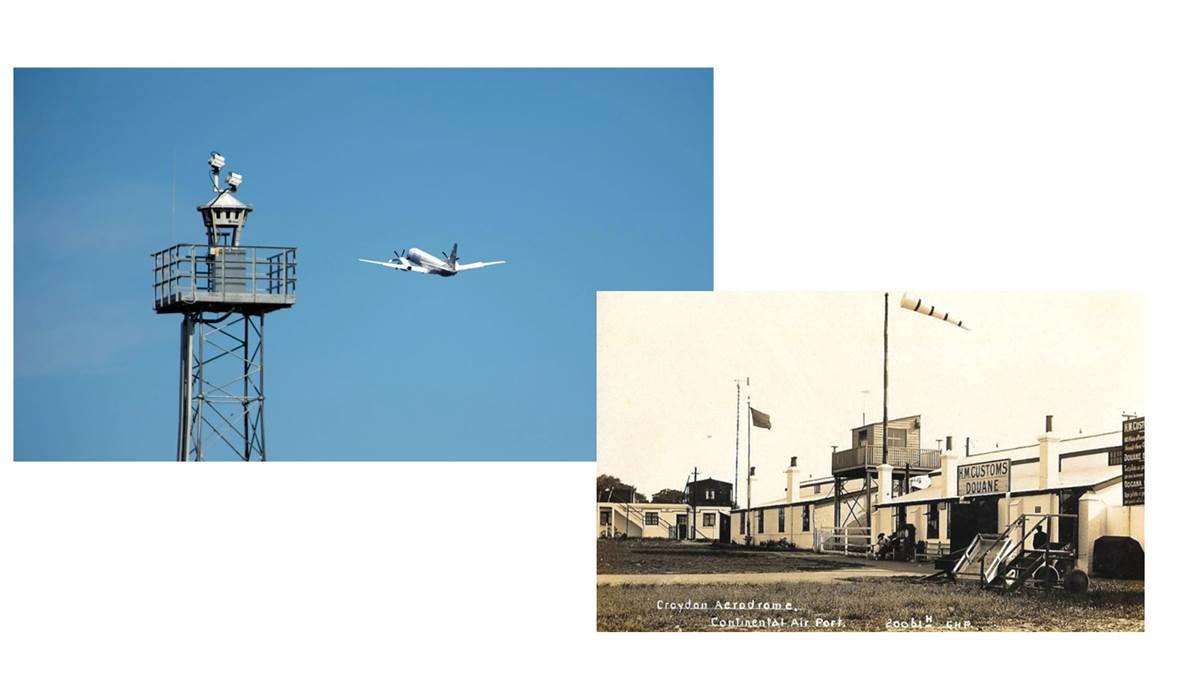Aviation history
Evolution of the control tower
By Emma Quedzuweit
The control tower is a familiar icon at airports around the world, yet the structure and technology we know today are the result of long years of experimentation.

In the early 1900s there was little need for organization or control with so few aircraft in the air, but World War I introduced new needs. On September 15, 1918, Lt. Col. Harold Hartney, commander of the U.S. Army Air Service First Pursuit Group, built a scaffolding platform on top of the command hut at his airfield near Rembercourt, France. The hastily built structure was intended to use light signals to communicate with the observation balloon-busting team Frank Luke Jr. and Joseph Wehner on a night mission. The airfield was to be kept dark to avoid enemy detection, and on their return the pilots were to signal a code to the tower, who would signal back and give the order to uncover the bonfires lining the runway, giving the pilots a one-minute window for landing. Hartney claimed the event as the first use of a control tower for night flying.
As air traffic increased in the 1920s, the need for airport systems in place to communicate with aircraft became clear. The advancement of radio communication and navigation revolutionized the abilities of air traffic control, and the first control tower to use this technology was built at London’s primary airport in 1920. Busy airports around the world saw the benefit of such a system, and the first tower with radio communication in the U.S. was built in Cleveland, Ohio, in 1930.
World War II produced another boom in technology, and by 1945 two new systems for towers were available to the public—ground controlled approach (GCA), which used radar; and the instrument landing system (ILS). The first U.S. civilian control tower equipped with these new advances began operating in Indianapolis in 1946.
Today, towers use a combination of all these systems, yet new technologies are still emerging. The first remote-controlled tower was installed in Sweden in 2015, containing 14 high-resolution cameras and sensors providing a 360-degree view of the airport. Aircraft arriving and departing are guided by controllers who are watching live at other airports up to 90 miles away. Development of these towers is still underway, with the intention of including infrared and thermal sensors.


